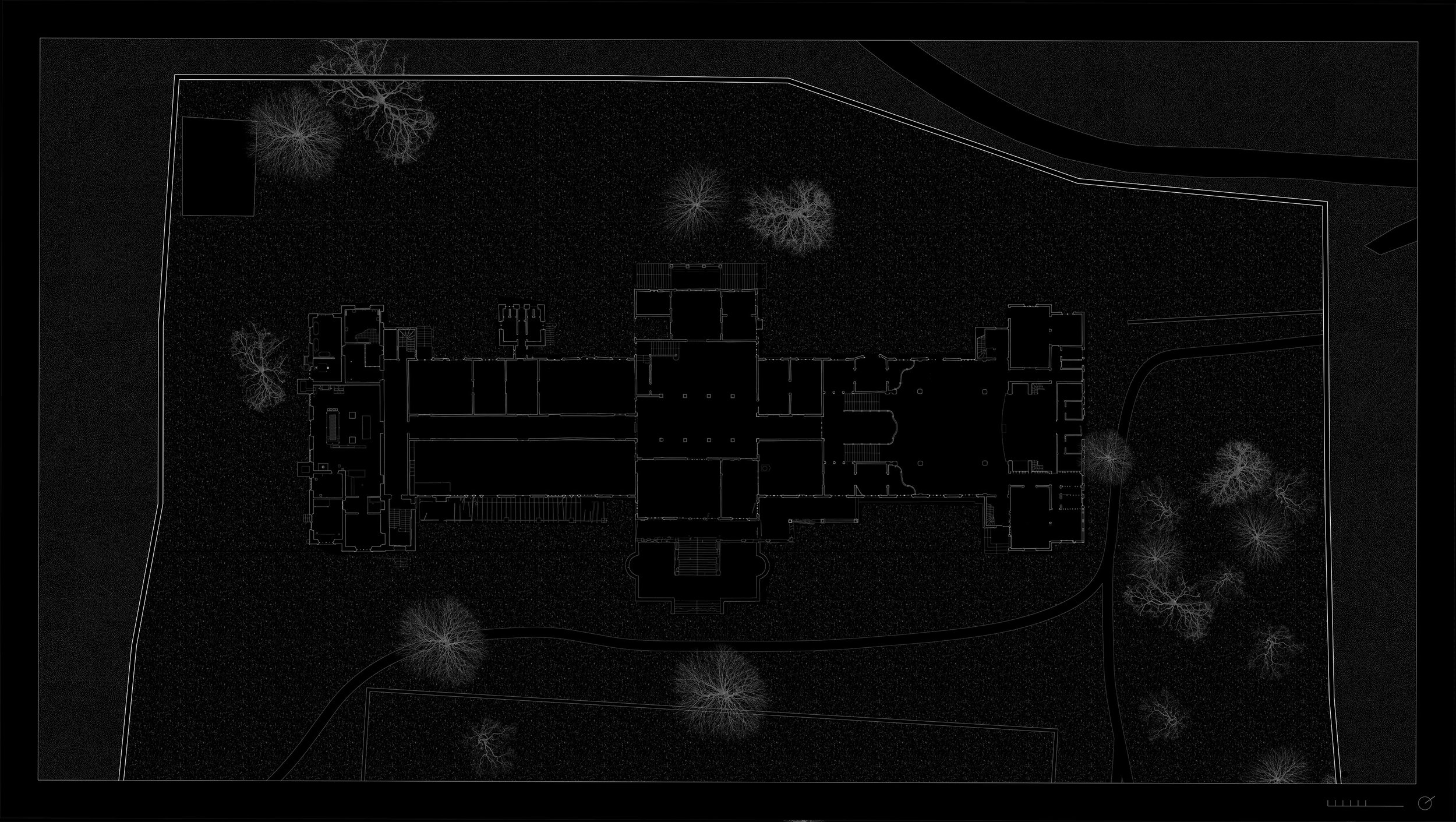this project delves into Büyükada's transformation from a multi-vocal island to a space marred by segregation. focusing on an abandoned orphanage, i uncovered layered narratives of marginalisation achieved through governmental policies enforcing ethnic homogenisation and socio-economic exclusion. embracing an eco-feminist perspective, it confronts traditional architectural restoration practices that reinforce the status quo, by proposing a communal activity of dismantling as a means to expose oppressive structures. i integrate poetry to capture the emotional essence of this transformation, distilling complex ideas, and amplifying voices of marginalised people. the project utilises a "second skin" to protect the orphanage from further damage and for it to be held in time. for the stories of the children and the island's history to be uncovered. the proposition involves the design of a shared practice where all the community partakes in dismantling the physical remnants of oppression, that democratises space and fosters community engagement and reconciliation. the aim is to reimagine heritage, creating a path to healing and unity. confronting the conditions of segregation and marginalisation, the project transforms the site into a space of reflection and collective memory. this approach offers a new way to engage with and repairing historical sites of injustice, not only on this site but potentially on many others, fostering a broader sense of community and historical awareness.
map of istanbul showing the proximity of the archipelago to mainland.
solid yellow lines show direct ferries and dashed yellow lines show indirect ones that pass by all the islands.
the site of the orphanage is completely surrounded by a fence and barbed wire to ensure no one enters the site. the proposal aims to dissolve this boundary and make the site accessible to all the public including the most vulnerable of the community; the kids.
the constructed second skin, hold the building in time by protecting it from further weathering and also providing necessary support for platforms that serve for dismantling the building itself.
the building itself carries an incredible history and a violent one at that. what was built as a casino hotel, without any adaptation became an orphanage after the sultan at the time did not allow for its operations as a casino. the orphanage changed functions and housed many different people causing it to dilapidate to then finally be abandoned in 1964. the project aims to expose these histories by peeling back the layers in a communal act of dismantling.
in order to be able to dismantle the building a careful study of the as built has been done to see how the building was made. this allowed me to dictate how the building would be dismantled in order to make the how-to guide for the public.









